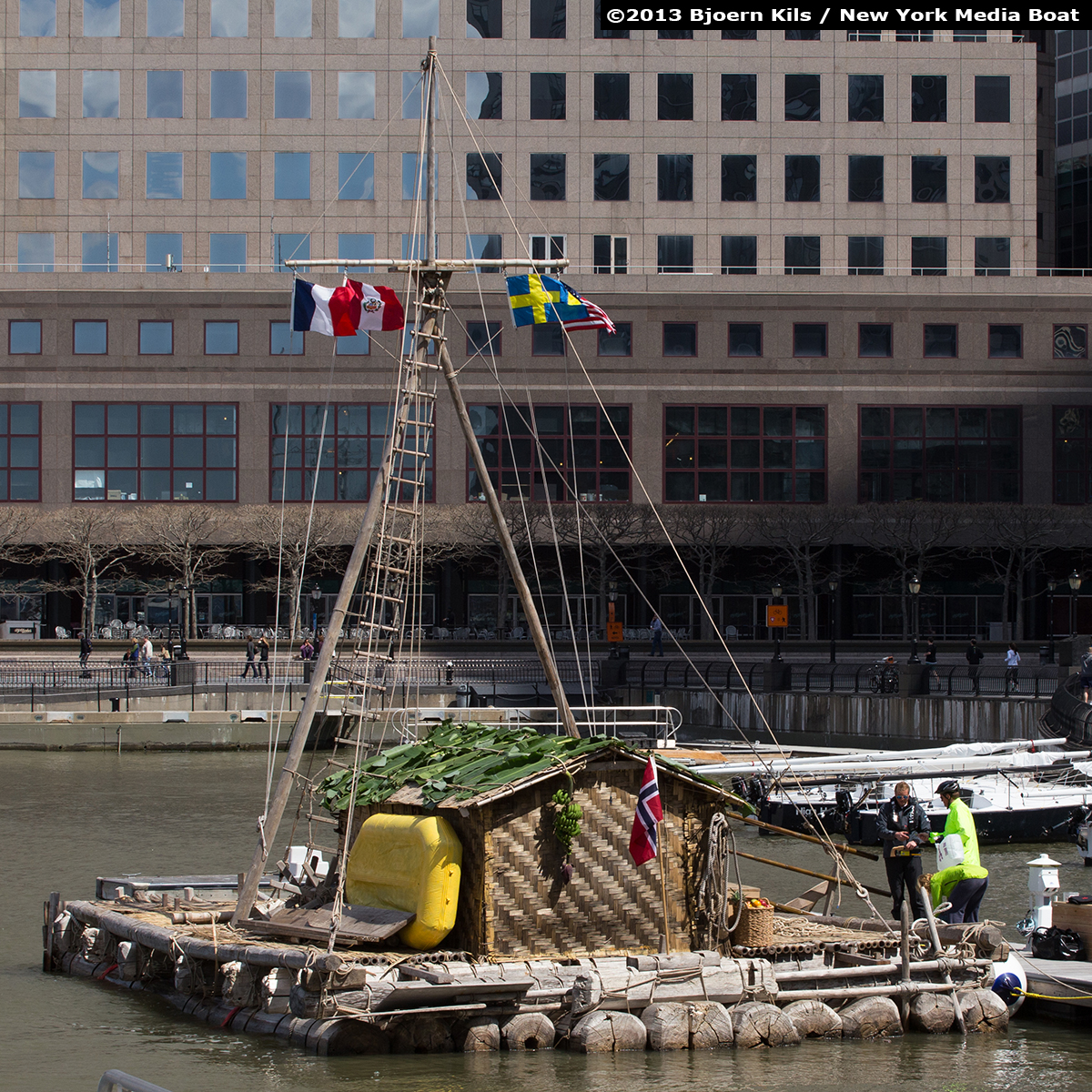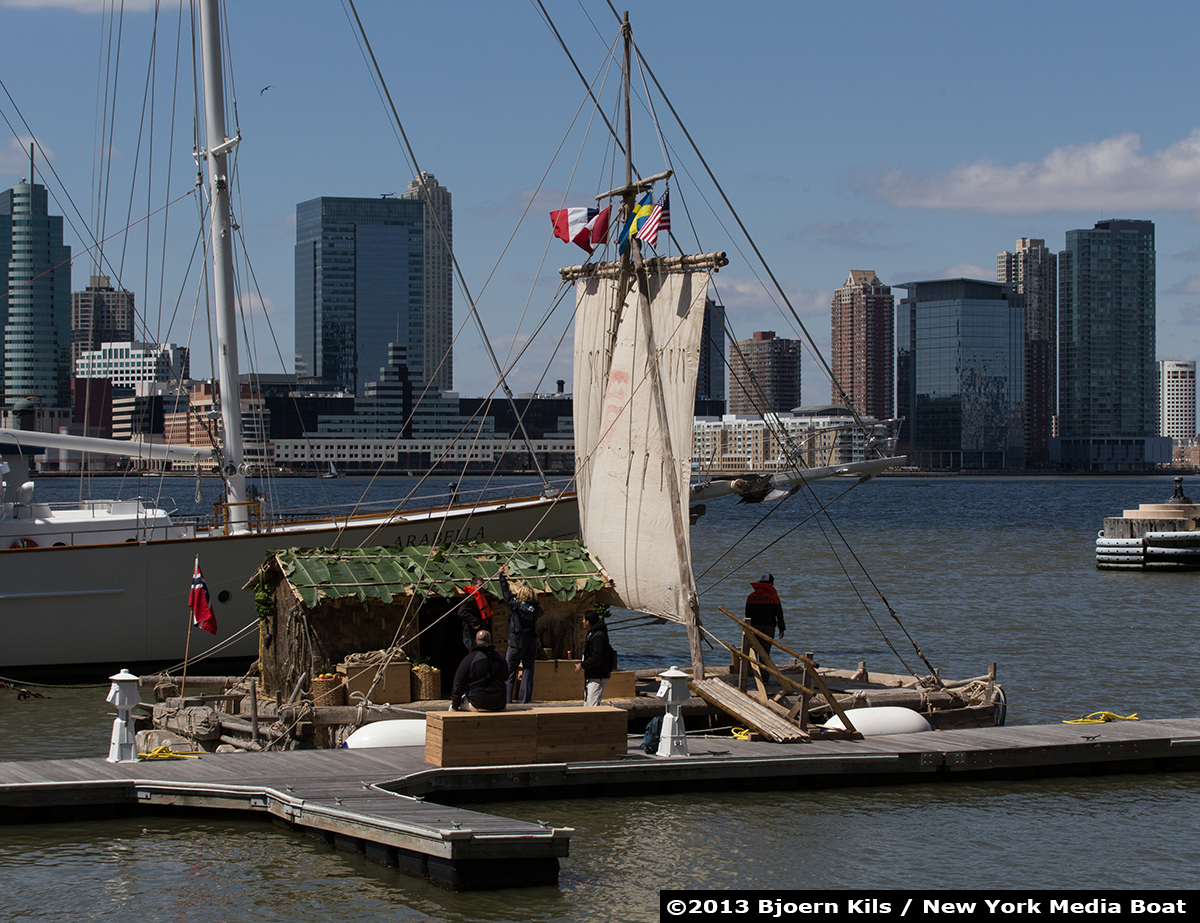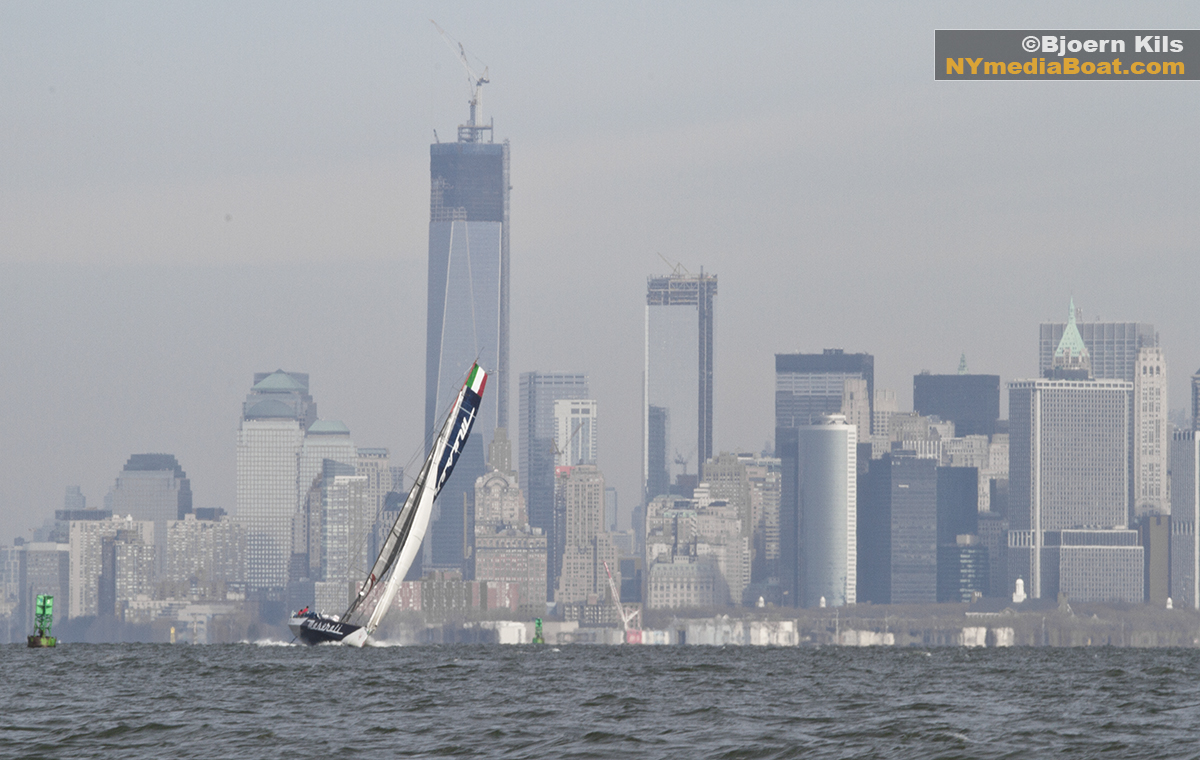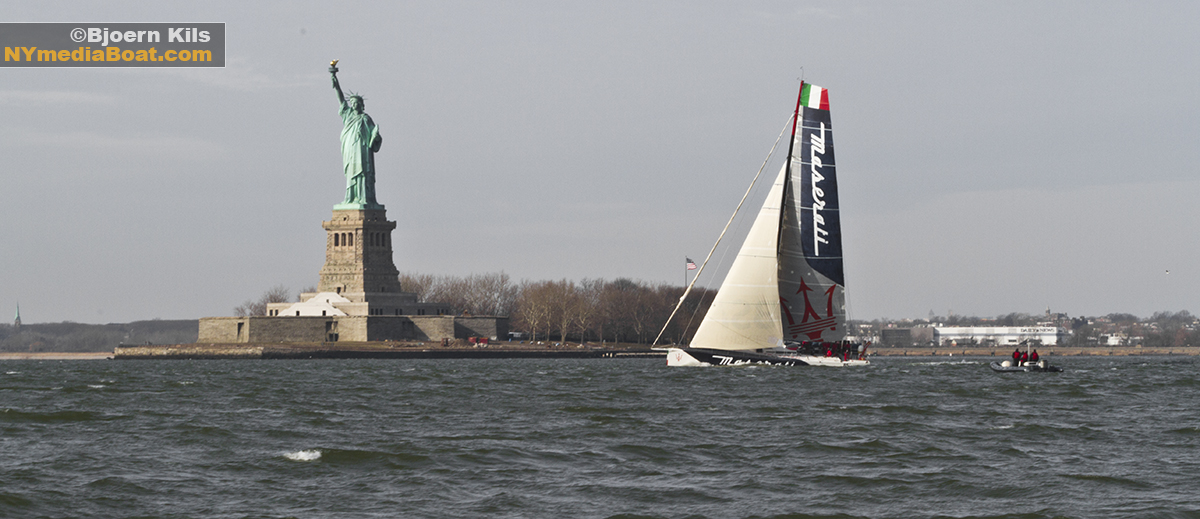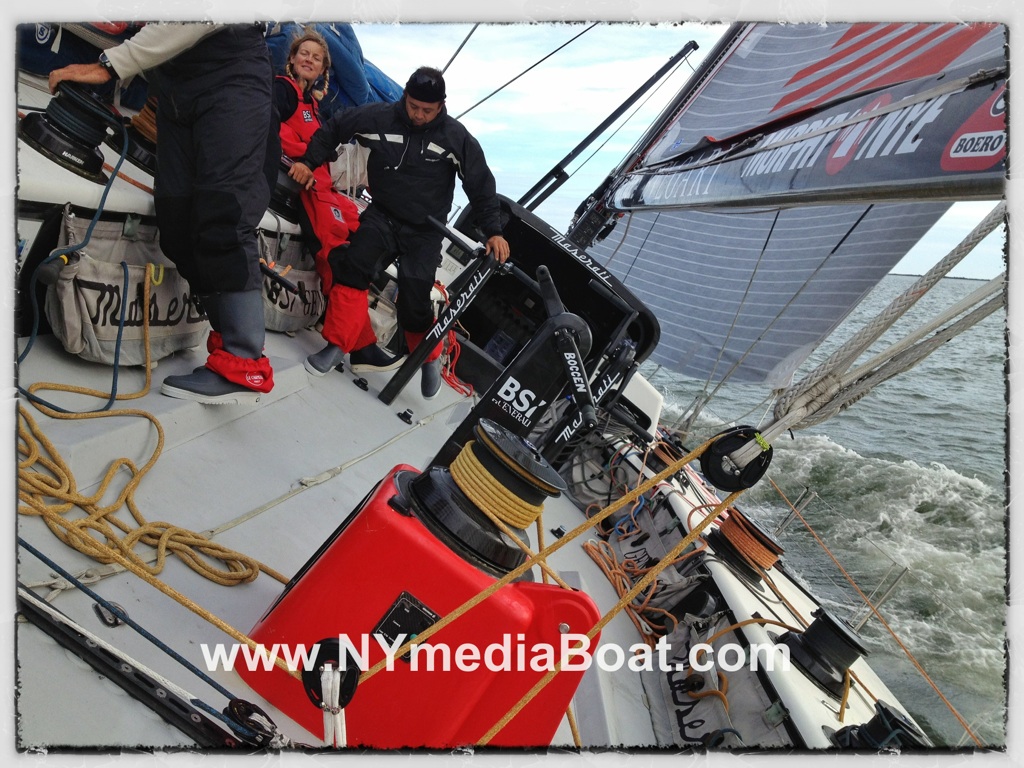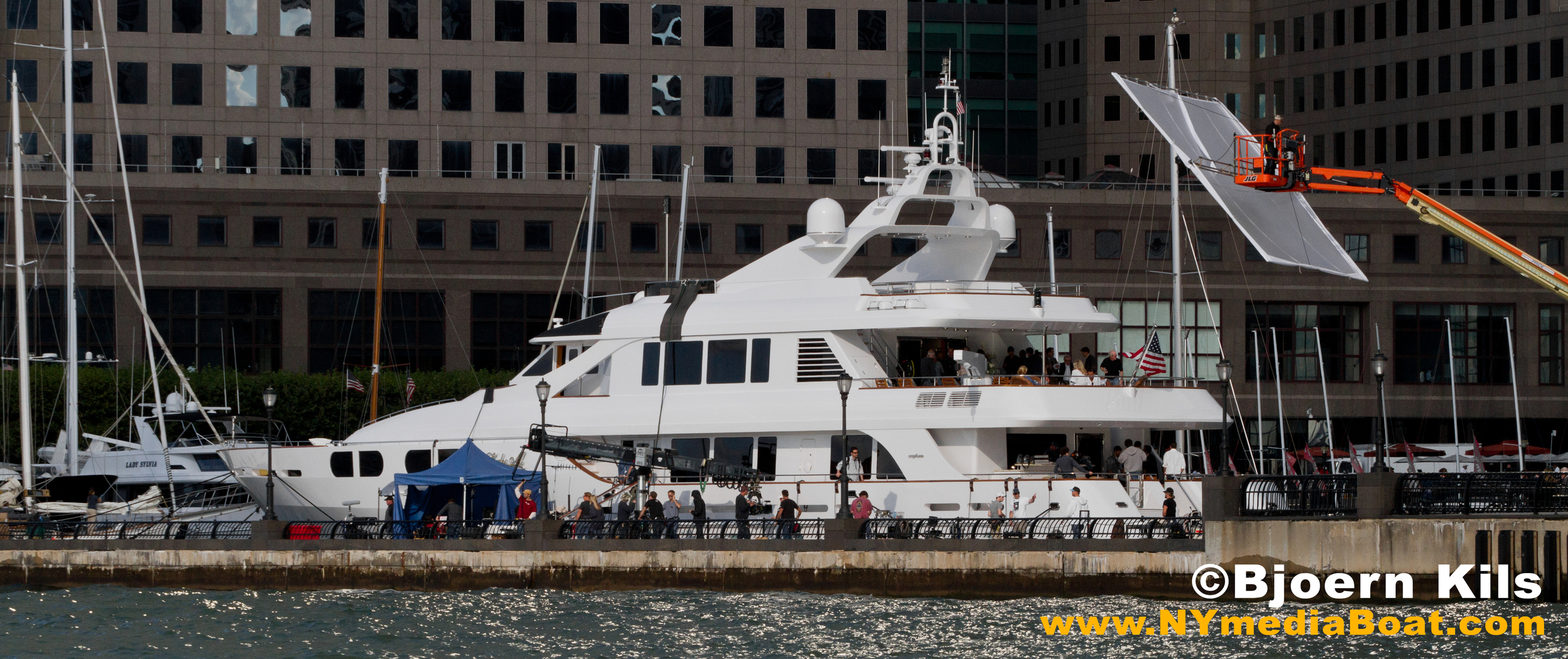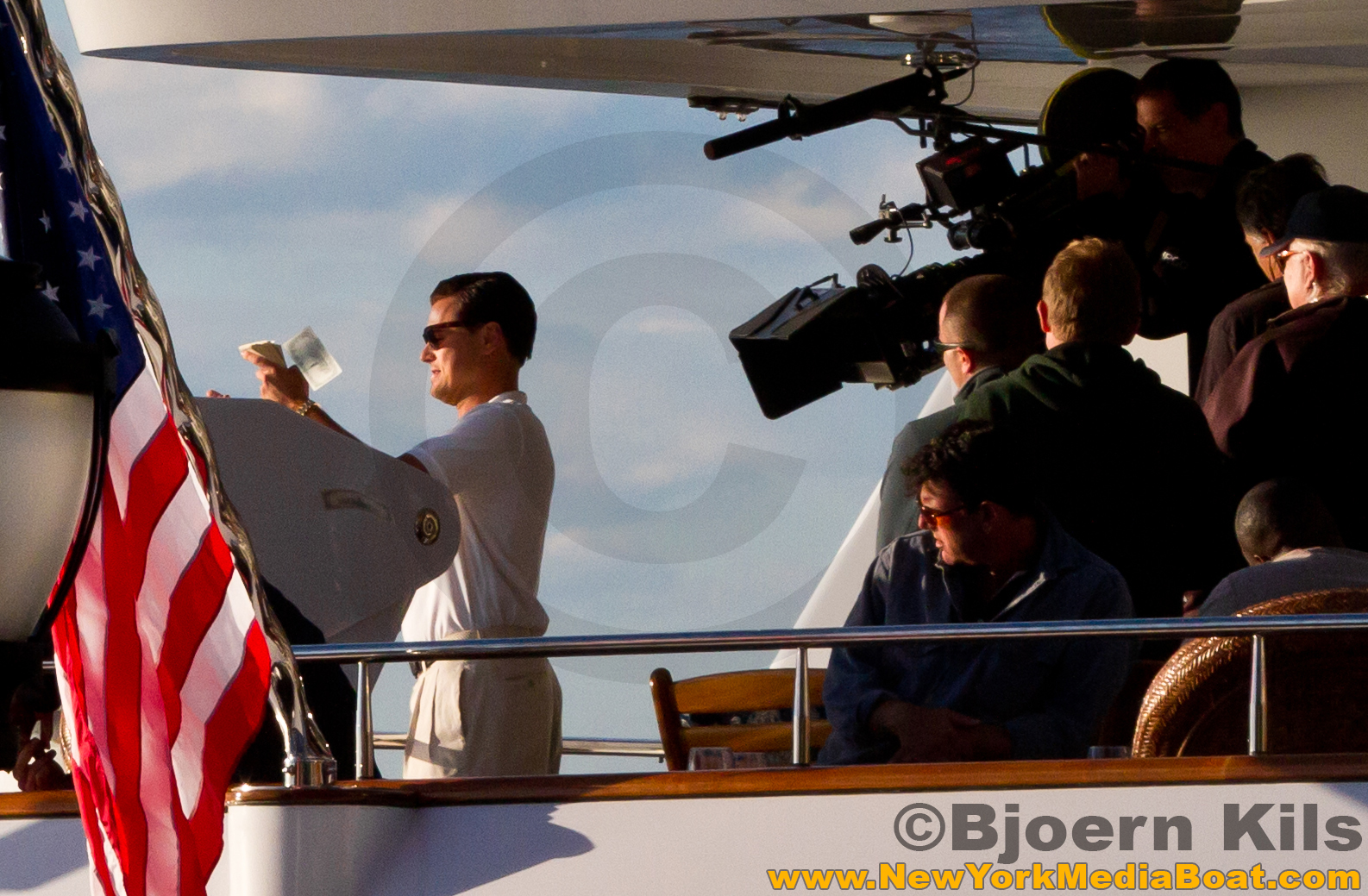American sailor Ryan Breymaier raised a thin metal pipe and chipped away at a layer of ice that had formed overnight on parts of Maserati’s deck.
Skipper Giovanni Soldini took a sip of hot tea from a friend on the dock and lit a cigarette to stay warm.
“We are looking forward to go and reach the hot water as soon as possible because it’s cold,” Soldini told me as we shivered in the morning light at North Cove Marina, where the crew was readying Maserati for her departure.
“When we reach the Gulf Stream,” he said, “the air will be warmer and life will be easier.”
The week was the coldest that Soldini and his crew of eight had experienced since they arrived in New York on December 4. They were awaiting the ideal conditions to make a run for the New York to San Francisco monohull world record: 57 days.
The northwest winds on this last day of 2012 were exactly what the modified Volvo Open 70 needed to push her “just south of east,” as navigator Boris Herrmann described the initial heading of 110 degrees. The 14,000-mile route first stretched the team south and eastward into the Atlantic almost the length of the continental U.S., around the elbow of Brazil, down the South American coast and ‘round the treacherous Cape Horn.
Then they’d rush back up north through the Pacific Ocean almost midway between French Polynesia and Chile, across the equator for a second time, and into San Francisco.
Since it’s impossible to predict the weather 40 days out – their target time, as they’d also like to take the overall record of 43 days, held by the catamaran Gitana – the forecast for the first week is critical. Soldini said the day’s increasing northwest winds, ultimately predicted to reach 35 to 40 knots, would help slingshot them well north of Bermuda, and eventually into the trade winds.
“If everything goes to plan, we could be in 10 days at the equator,” Herrmann said on the dock at North Cove at around 8 am on the last day of the year. “We hopefully only suffer two days from this cold.”
After hitting the easternmost point of Brazil, Maserati will stay close to the South American coast all the way to Cape Horn, where she’ll likely pass through the Le Maire Strait into the Drake Passage.
Soldini, Braymeier, and Herrmann have all been ‘round the horn, but never “the wrong way around,” Herrmann said.
“I’ve been around two times,” Soldini told me, “but in the good direction!”
Herrmann said that there’s a 60% chance the winds will be working against them, with the likelihood of favorable winds at “just a few percent.”
And the odds are high that they’ll have a low-pressure system waiting for them there.
“Getting around Cape Horn without having to stop and wait … is key to success with this record,” Breymaier said. “If you can get around quickly and get moving north again, you’re golden. If not you could sit there for a long time.”
Soldini said a storm could stymie them for up to a week. And once they get through, they’re still only halfway there. The next part of the voyage takes them far off the Chilean coast, thousands of miles offshore and possibly half way to the French Polynesian islands.
Then it’s back across the equator and up the North American coast – the “upwind part at the end that could be a little bit boring,” Breymaier says – and finally in to San Francisco.
“It could happen that we have to make a big detour” to get into San Francisco, Herrmann says. “It depends on the weather we find there. That’s too far away now to predict.”
Herrmann has tried to predict it, though. He’s run models for the trip based on 20-year historical weather data and the best routes put them in San Francisco in 42 days.
The average, though, is 55 days, and some – when the weather was never in their favor — put them in San Francisco much later.
The caveat is that the historical models were of “very low resolution,” Herrmann says, relying on weather information from only 12-hour intervals. But they don’t clash too much with the sailors’ intuitions.
“The multihull record is 43 days – that’s 16.5 knots average for the course, which is pretty high,” Breymaier told me after the ice had been hacked away. “We’re dreaming we can make it in 42 and say we have the overall record, but that’s certainly not a safe bet to make.”
“I think we’re gonna be somewhere between 45 and 50.”
The increasing winds – and the chill they brought – upped the crew’s motivation to leave, and by 10 am Maserati had pushed back from the dock at North Cove and sailed out into the Hudson.
Soldini said they haven’t made any definite plans if they do make it all the way around, but if they complete this historical route, there will be a “big party, first thing,” he says. “Then we’ll see.”











